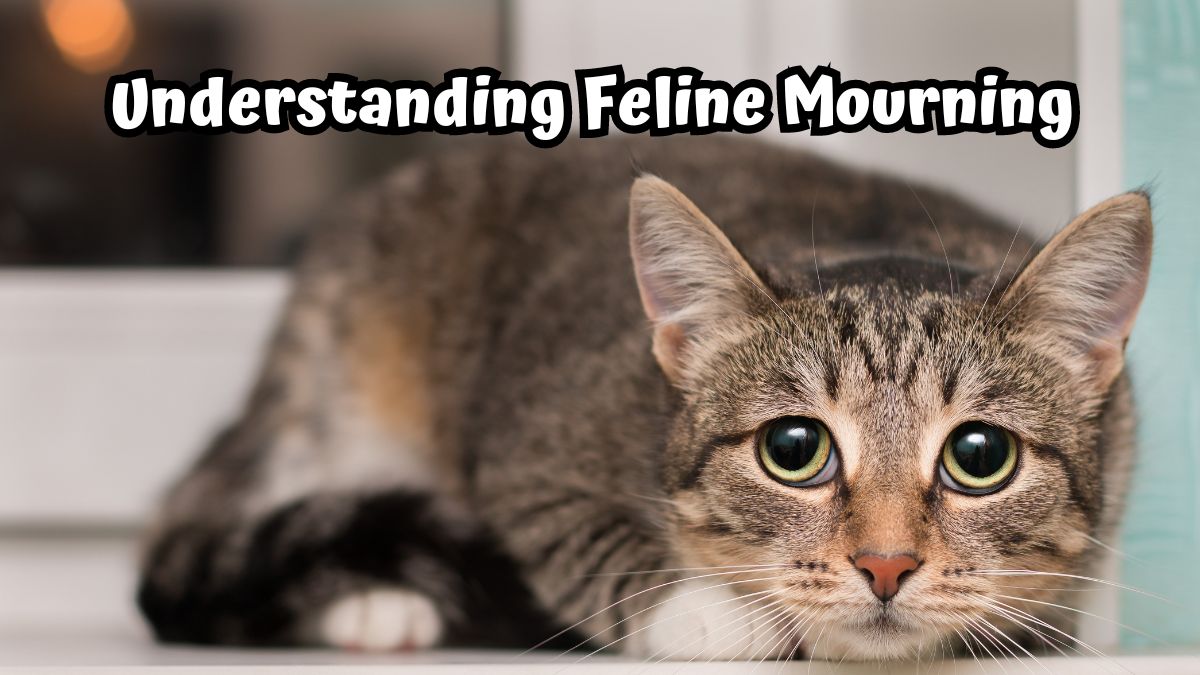Do cats possess the ability to sense when another cat is nearing death? This question opens the door to feline senses and emotions’ intriguing and complex world.
As we explore the nature of cat companionship, we uncover evidence and stories that suggest cats do indeed react to the imminent loss of their feline friends.
Observations show cats exhibiting changes in behavior, such as seeking solitude or displaying signs of mourning, when another cat in their environment is dying or has passed away.
This behavior hints at a deep-seated sensitivity and possibly an intuitive understanding of death, showcasing the profound connections cats can form with each other.
By exploring how cats respond to loss, we gain insights into their emotional depths.
We offer a richer appreciation of these enigmatic companions and guide us on how best to support them during these difficult times.
Understanding Feline Grief
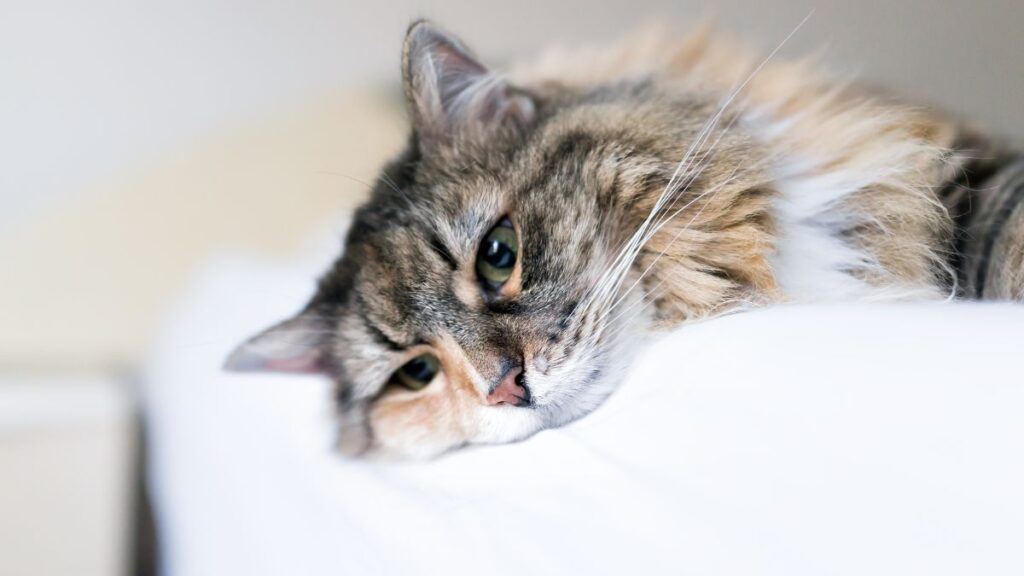
When a cat loses a companion, its behavior often changes, signifying a sense of loss. This grief can manifest in various ways, impacting the cat’s behavior and emotional state.
Signs of Grief in Cats
- Decreased Appetite: Cat may show less interest in food.
- Altered Sleep Patterns: Increased sleep time or restlessness.
- Vocalization Changes: More frequent or altered meowing.
- Seeking Solitude: Cat may withdraw and hide more than usual.
The Impact of Loss on a Cat’s Behavior
The loss of a feline companion can result in notable behavioral shifts. The remaining cat might become more clingy with their owner or exhibit signs of depression.
Sudden changes to their routine or environment can exacerbate these effects, highlighting the need for stability.
Key Behavior Changes:
- Clinginess or avoidance
- Neglect of grooming
- Changes in litter box habits
Chemical Changes During the Grieving Process
During grief, stress hormones such as cortisol can surge in cats, potentially compromising their immune systems.
Veterinary advice suggests maintaining a stable environment and providing ample emotional support to ease a grieving cat’s stress.
Supporting a Grieving Cat
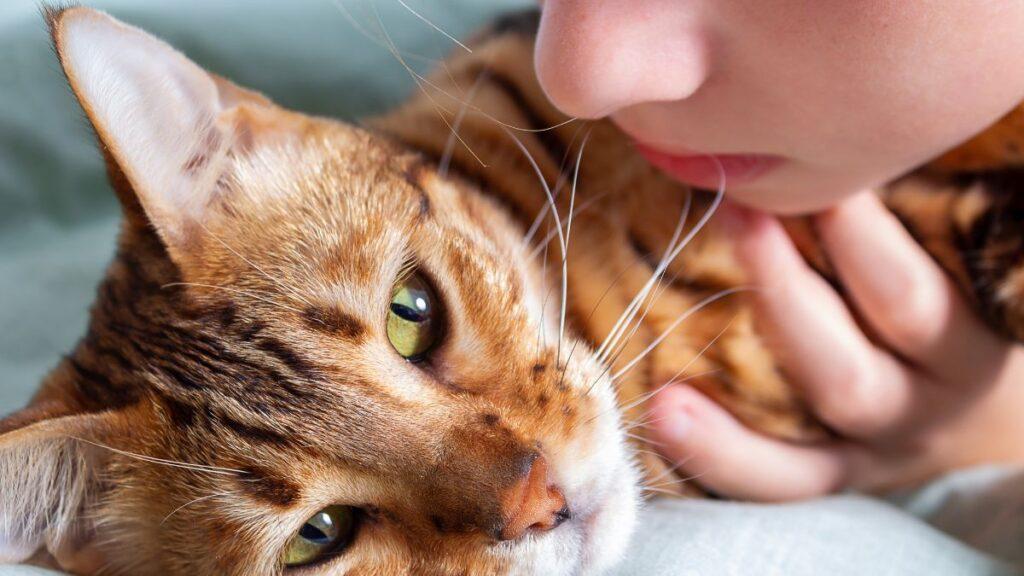
A cat may exhibit signs of grief when it loses a feline companion. Recognizing these signs and providing appropriate support can help the healing process.
Providing Emotional Support
Offer extra attention to your grieving cat. Speak softly and provide gentle petting to comfort it. Presence can be a powerful support, so be with your cat.
Maintaining Routine and Stability
Keep the daily routine as consistent as possible. Cats rely on predictability, so feeding times, grooming sessions, and playtime should remain stable to help mitigate stress.
- Daily Feeding Times: Adhere to established schedules.
- Play Sessions: Engage in regular, familiar activity.
- Grooming Rituals: Continue usual grooming practices, as these can be especially soothing.
Creating a Nurturing Environment
Ensure your cat has a quiet place to retreat if they need solitude. Introducing new toys can provide distraction and emotional relief.
- Quiet Space: Designate an area away from noise and household activity.
- New Toys: Consider providing new stimuli for mental engagement.
If signs of grief persist, consider seeking assistance from a pet bereavement support service for professional guidance.
Introducing a New Cat

Careful planning is essential for a smooth transition when a household considers introducing a new cat after another has passed away.
Timing the Introduction of a New Pet
Owners should provide extra time for themselves and the surviving pet to grieve the loss before introducing a new cat.
The appropriate timing varies per individual and pet; however, waiting several weeks or months can be beneficial.
Assessing the Surviving Cat’s Readiness
Owners should observe the surviving cat’s behavior for signs of stability and readiness. A withdrawn or depressed cat may need more adjusting time before welcoming a new kitten.
On the other hand, a cat that displays loneliness or a lack of activity may be ready for a new friend.
Respecting the New Hierarchy
When a new pet is introduced, the hierarchy within the home will change. It’s vital to allow the cats to establish this new hierarchy at their own pace.
Interference in this process may create tension. To ease the transition, owners should provide separate resources like food bowls and litter boxes.
Observations from Pet Owners and Experts
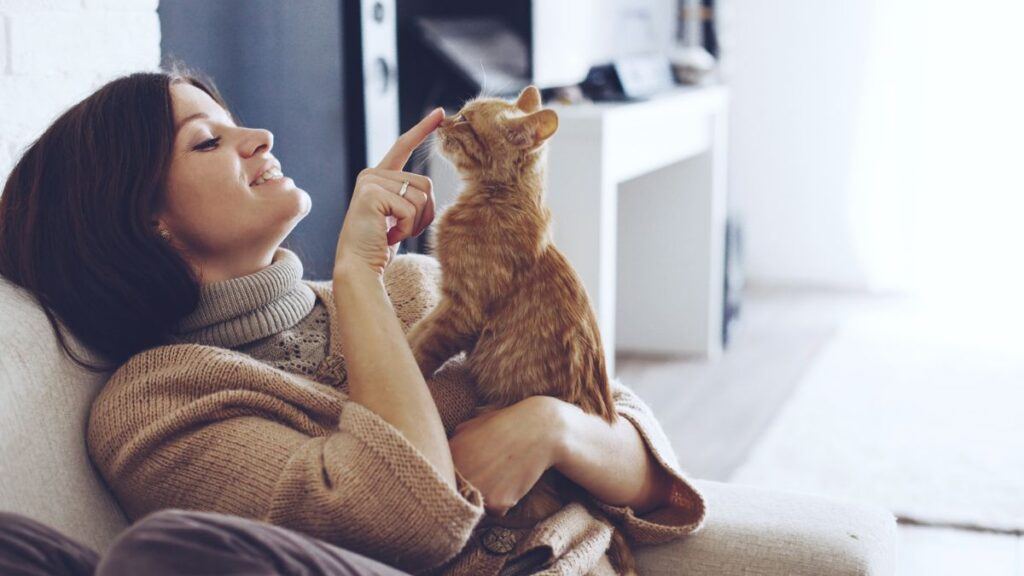
This section examines cat owners’ experiences and insights from experts to determine whether cats can sense the death of another cat.
Anecdotal Evidence vs. Scientific Research
Anecdotal Evidence: Pet owners frequently share stories highlighting a cat’s response to the death of a fellow feline.
These accounts usually describe changes in behavior, such as increased vocalization, searching behavior, or altered eating habits.
However, while compelling, rigorous scientific study does not support these observations.
Scientific Research: There is currently little scientific evidence supporting the claim that cats can sense the impending death of another cat.
Studies on animal behavior often rely on observable, measurable phenomena, and the concept of sensing death does not easily lend itself to scientific validation.
Personal Experience of Cat Owners
Behaviors Observed:
- Affection: Cats have been observed cuddling more with a fellow cat who is unwell, which some owners interpret as an understanding of illness or death.
- Withdrawal: Conversely, some cats withdraw from their sick companions, which could indicate a recognition of something amiss.
It is important to note these interpretations are highly subjective and differ from owner to owner.
Professional Insights on Feline Behavior
Experts’ Views: Animal behaviorists acknowledge cats have a keen perception of their environment and can detect changes in the health of other animals. However, they caution against attributing human-like comprehension of death to feline behavior.
Consensus Among Professionals: While veterinarians and animal behaviorists observe shifts in behavior around sick or deceased animals, they stress the importance of avoiding anthropomorphic interpretations. Cats’ responses to death or illness may be rooted in instinct rather than a conscious awareness of death.
Physical and Behavioral Responses to Loss
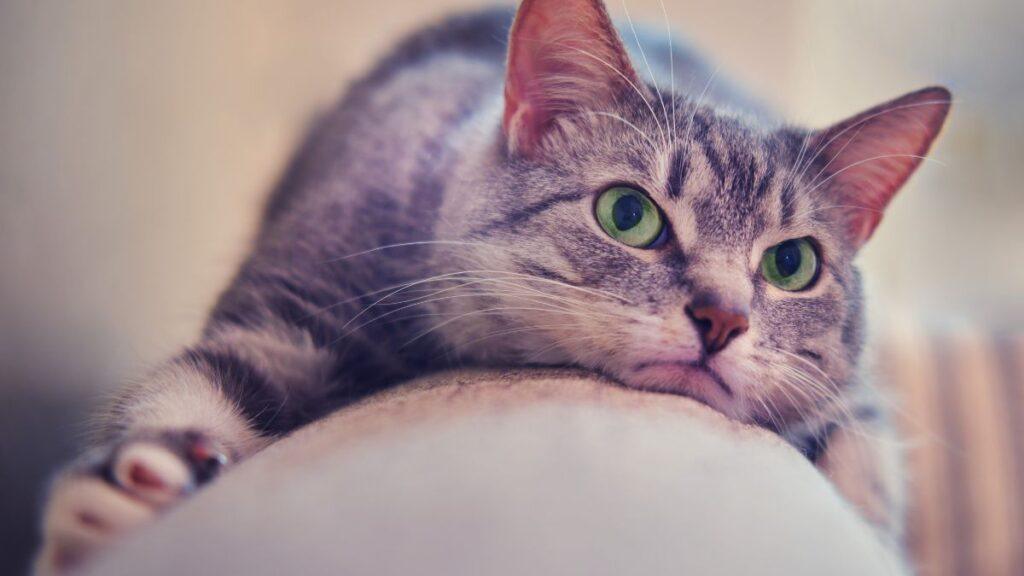
Cats exhibit distinct physical and behavioral changes following the death of a fellow feline companion.
These responses may vary from visible alterations in daily habits to subtle shifts in interactions with their environment and humans.
Loss of Appetite and Energy Levels
Loss of Appetite: Following the loss of their companion, a surviving cat may show a reduced interest in food. This can manifest as eating less than usual or outright refusing meals.
- Lowered Energy Levels: Another observable sign is a decrease in energy. The cat might sleep more, engage less in play, or display lethargy overall.
Changes in Body Language
Behavior Changes: Cats may become more withdrawn or show behavioral changes such as increased vocalization or irritability.
- Altered Body Language: A shift in body language can indicate distress, including flattened ears, a lowered head, or a tucked tail.
Response to the Deceased Cat
Visible Response: When presented with the deceased cat, the surviving cat might sniff, nudge, or sit beside their feline friend for an extended period.
- Withdrawn Cat: In some cases, the cat may become withdrawn or search for the deceased, indicating an awareness of the absence and a possible sense of loss.
Related: 10 Signs Your Cat is Stressed: Recognizing Feline Anxiety Indicators
Considerations for Multi-Cat Households
When a cat passes away in a multi-cat household, it is important to manage interactions among the remaining cats, consider the impact of loss on their social structure, and recognize when human intervention might be necessary.
Managing the Dynamics of Cat Communities
In multi-cat households, the dynamics can shift dramatically following the death of a fellow cat.
It is crucial to observe their interactions closely, as changes in behavior can indicate stress or grief among the surviving cats.
Owners should provide ample resources—such as food, water, and litter boxes—to minimize competition and conflict.
Observing the Social Structure Changes
A mother cat or dominant companion cat’s passing may disrupt the hierarchy, leading to a second stage where surviving cats establish new roles and relationships.
Observing social interactions during this time is pivotal. Changes may involve alterations in sleeping arrangements, feeding hierarchy, or grooming behaviors among household pets.
The Role of Human Intervention in Grief
While cats can adjust over time, human intervention can facilitate a smoother transition to the final stage of grief management.
This includes maintaining a routine, offering extra attention, and monitoring for any signs of health issues.
Intervention is also critical when a cat shows persistent signs of distress, in which case a visit to a veterinarian for further assessment may be required.
Introducing Cory Haasnoot, a devoted father, loving husband, and enthusiastic cat lover. As a key content creator for CatFurLife.com, Cory blends his family values and passion for felines into engaging and informative content. He brings a unique perspective to the site, sharing cat care tips and how cats can enrich family life and bring joy to households.

